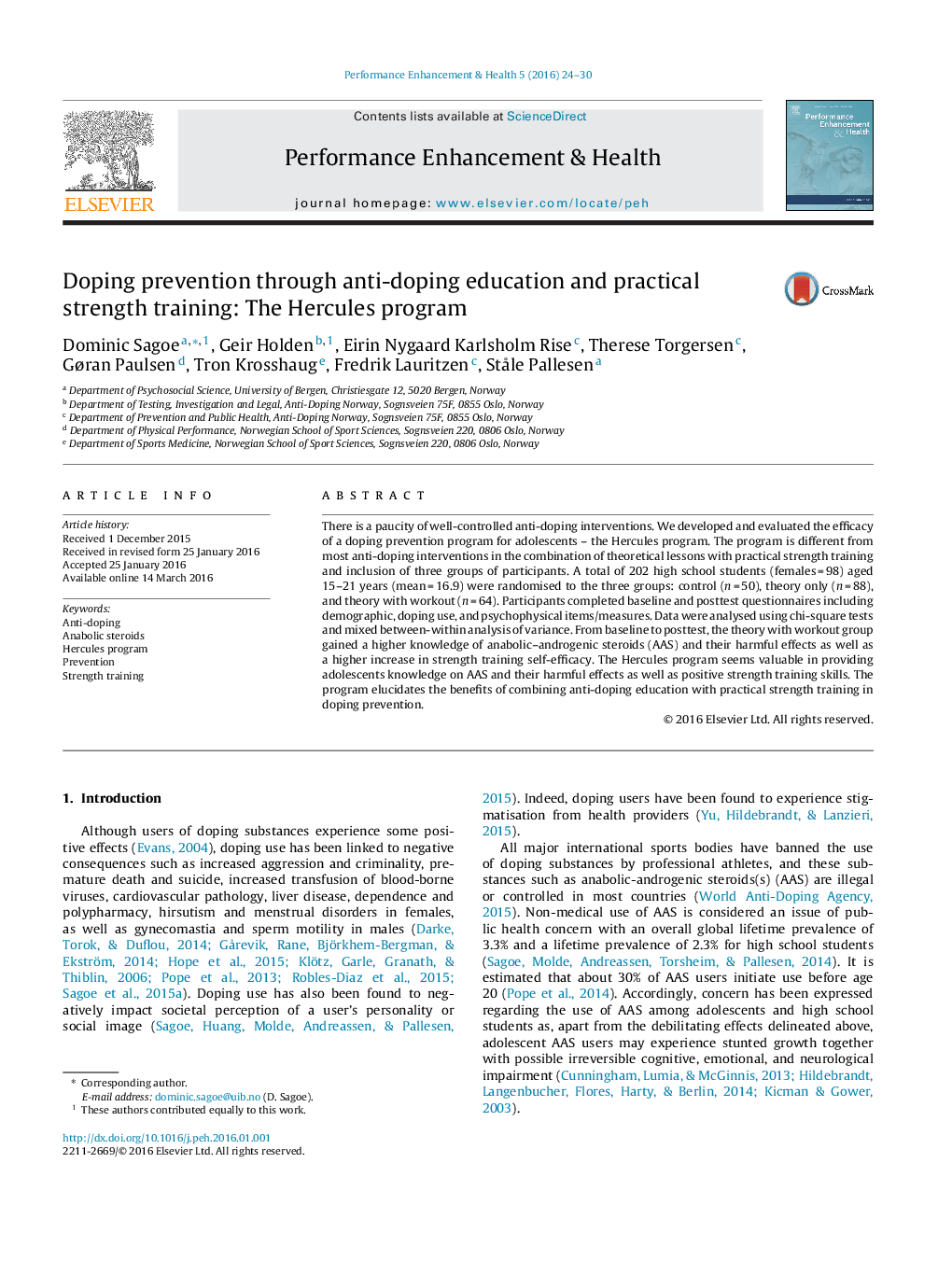| Article ID | Journal | Published Year | Pages | File Type |
|---|---|---|---|---|
| 889516 | Performance Enhancement & Health | 2016 | 7 Pages |
•There is a dearth of well-controlled anti-doping programs.•We examined doping prevention with anti-doping education and strength training.•Compared at baseline and posttest: control, theory only, and theory with workout.•Doping prevention with both anti-doping education and strength training is beneficial.
There is a paucity of well-controlled anti-doping interventions. We developed and evaluated the efficacy of a doping prevention program for adolescents – the Hercules program. The program is different from most anti-doping interventions in the combination of theoretical lessons with practical strength training and inclusion of three groups of participants. A total of 202 high school students (females = 98) aged 15–21 years (mean = 16.9) were randomised to the three groups: control (n = 50), theory only (n = 88), and theory with workout (n = 64). Participants completed baseline and posttest questionnaires including demographic, doping use, and psychophysical items/measures. Data were analysed using chi-square tests and mixed between-within analysis of variance. From baseline to posttest, the theory with workout group gained a higher knowledge of anabolic–androgenic steroids (AAS) and their harmful effects as well as a higher increase in strength training self-efficacy. The Hercules program seems valuable in providing adolescents knowledge on AAS and their harmful effects as well as positive strength training skills. The program elucidates the benefits of combining anti-doping education with practical strength training in doping prevention.
